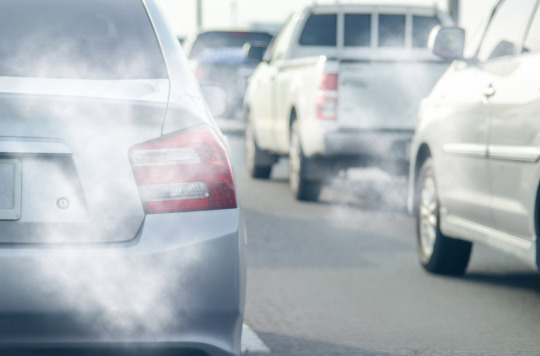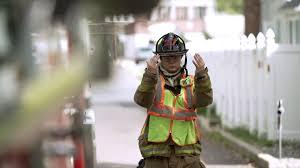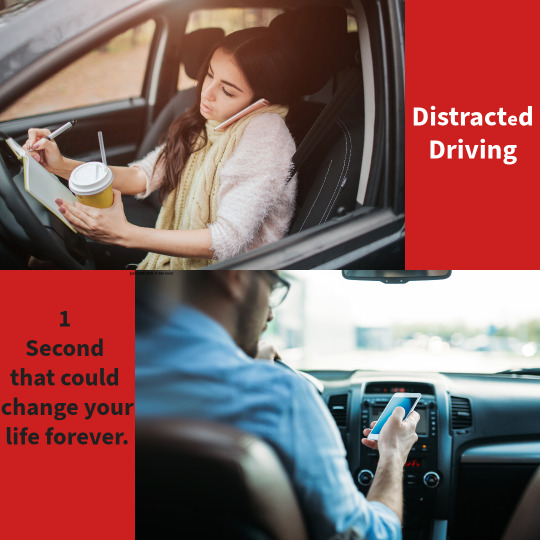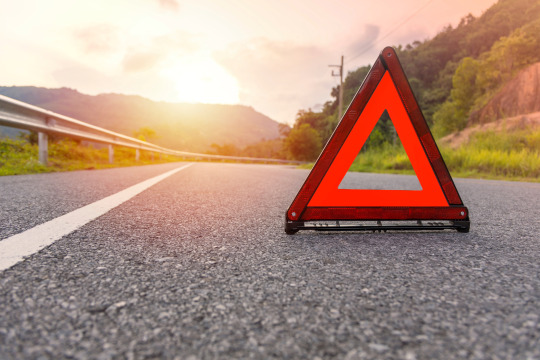#safe_t_mark
Explore tagged Tumblr posts
Text
Benzene: Understanding the Risks and Where It Lurks
Benzene, a colorless liquid with a sweet odor, might sound harmless, but don't be fooled. This industrial chemical, found naturally in crude oil, packs a hidden punch, posing serious health risks. While its uses in various industries are undeniable, understanding the potential dangers of exposure is crucial.
The Dark Side of Benzene:

The primary concern lies in its carcinogenic nature. Long-term exposure to benzene has been linked to leukemia, a blood cancer, and other blood disorders like anemia. Additionally, it can irritate the skin, eyes, and nervous system, causing headaches, dizziness, and fatigue.
Smoking: The Notorious Culprit:

For smokers, the risk is amplified. Cigarettes, unfortunately, contain significant amounts of benzene, making them the single largest source of exposure for this group. The stark reality is that smokers inhale ten times more benzene per day compared to non-smokers, highlighting the urgency of quitting.
Beyond the Smoke:
But smokers aren't the only ones at potential risk. Benzene lurks in various unexpected places:
Industrial settings: Oil refineries, chemical plants, gas stations, and steel mills can expose workers due to their use or production of benzene.

Environmental sources: Vehicle exhaust, emissions from burning coal and oil, and hazardous waste sites can contribute to airborne benzene, impacting nearby communities.

Everyday products: Glues, paints, dyes, and certain industrial and household detergents might contain trace amounts of benzene, requiring caution, especially in poorly ventilated areas.

Minimizing Your Exposure:
While eliminating benzene exposure might be challenging, taking steps to minimize it is vital:
Quit smoking: This single action significantly reduces your risk and protects those around you from secondhand smoke.
Be mindful at gas stations: Limit exposure during refueling by holding your breath and avoiding excessive inhalation.
Choose wisely: opt for safer alternatives to products containing benzene, especially in enclosed spaces.
Stay informed: Stay updated on local environmental concerns and potential benzene sources in your community.
Remember:
Benzene exposure is a serious concern, but knowledge is power. By understanding the risks and taking informed precautions, you can significantly reduce your exposure and protect your health. If you have concerns, consult your doctor for personalized guidance.
#cancerprevention#publichealth#environment#chemicals#safety#wellness#healthychoices#benzeneexposure#pollution#industrialchemicals#smokers#secondhandsmoke#communityhealth#education#Empowerment#safe_t_mark#safetytips#safetyfirst
0 notes
Text
Lifting Techniques

Lifting injuries are one of the most common types of workplace injuries. They can cause pain, disability, and even death. However, most lifting injuries can be prevented by using proper lifting techniques.
Here are some tips for safe lifting:
Assess the load. Before you lift anything, take a moment to assess the weight and size of the load. If it is too heavy or too bulky to lift safely, get help.
Plan your lift. Be sure to have a clear path to where you are going to put the load. Avoid lifting over obstacles or in tight spaces.
Use your legs, not your back. Bend your knees and squat down to lift the load. Keep your back straight and your core engaged.
Lift with a smooth, steady motion. Don't jerk or heave the load.
Keep the load close to your body. This will help you to maintain your balance and control.
Avoid twisting or turning while lifting.
Put the load down carefully. Bend your knees and squat down to put the load down.
Here are some additional tips for safe lifting:
Get help when needed. Don't be afraid to ask for help from a coworker or supervisor if you need to lift a heavy object.
Use mechanical lifting devices whenever possible. Mechanical lifting devices, such as forklifts and hoists, can help to reduce the risk of lifting injuries.
Take breaks. If you are lifting heavy objects on a regular basis, be sure to take breaks to rest your back and muscles.
If possible, store heavier objects at waist height, much easier to lift instead of lifting from ground up.
Here are some common lifting mistakes to avoid:
Lifting too much weight. This is the most common lifting mistake. If you are unsure how much weight you can safely lift, ask for help.
Lifting awkwardly. This can include lifting objects that are too large or too bulky to lift safely or lifting objects from awkward positions.
Twisting or turning while lifting. This can put a strain on your back and lead to injury.
Lifting with your back instead of your legs. This is another common lifting mistake that can lead to back injuries.
Here are some tips for lifting specific types of objects:
Lifting boxes: When lifting boxes, be sure to keep your back straight and your core engaged. Lift with your legs and keep the box close to your body.
Lifting heavy objects from the floor: When lifting heavy objects from the floor, squat down with your knees and hips bent. Keep your back straight and your core engaged. Lift with your legs and keep the object close to your body.
Lifting objects above shoulder height: When lifting objects above shoulder height, be sure to use both arms and keep your back straight. Avoid twisting or turning while lifting.
By following these tips, you can help to prevent lifting injuries and keep yourself safe at work.
Additional Tips
Be aware of your surroundings. Make sure that you have a clear path to where you are going to put the load. Avoid lifting over obstacles or in tight spaces.
Wear proper footwear. Proper footwear can help to improve your balance and reduce the risk of slipping and falling.
Listen to your body. If you feel any pain, stop lifting and rest.
If you have any questions about lifting safety, be sure to ask your supervisor or safety manager
0 notes
Text
Spotter responsibilities for commercial vehicles 🚛

Spotters play a vital role in the safety of commercial vehicles. They are responsible for helping drivers safely back up and maneuver their vehicles. Here are some of the key responsibilities of a spotter:
Communicate with the driver: The spotter must be able to communicate effectively with the driver to give clear and concise instructions. This includes using hand signals, verbal commands, and radios.
Be aware of the surroundings: The spotter must be aware of the surroundings to identify any potential hazards, such as pedestrians, other vehicles, and objects.
Guide the driver: The spotter must guide the driver safely back up and maneuver the vehicle into the desired position.
Be alert and attentive: The spotter must be alert and attentive at all times to be able to react quickly to any changes in the situation.
Spotter responsibilities are especially important for commercial vehicles because of their size and weight. A small mistake can have serious consequences. Spotters must be properly trained and certified to ensure that they are able to perform their duties safely and effectively.
0 notes
Text
Slips, Trips, and Falls: A Comprehensive Guide

Slips, trips, and falls are the leading cause of nonfatal injuries in the United States, accounting for over 8 million emergency department visits and 25,000 deaths each year. They can happen to anyone, of any age, but they are more common among older adults and people with disabilities.
What is the difference between a slip, trip, and fall?
A slip occurs when you lose your footing due to a slippery surface.
A trip occurs when you catch your foot on something, such as a cord, rug, or uneven surface.
A fall is the act of coming down to the ground from a standing position.
What are the common causes of slips, trips, and falls?
Slippery surfaces: This can include wet floors, icy sidewalks, snow-covered walkways, and oily floors.
Clutter: Loose cords, wires, rugs, and other objects can create tripping hazards.
Uneven surfaces: Holes in the ground, cracked pavement, and uneven steps can also cause trips and falls.
Poor lighting: Poor lighting can make it difficult to see hazards on the ground.
Improper footwear: Wearing inappropriate footwear, such as high heels or flip-flops, can increase your risk of slipping or tripping.
What are the common injuries from slips, trips, and falls?
Slips, trips, and falls can cause a variety of injuries, including:
Sprains and strains
Fractures
Head injuries
Cuts and bruises
Back injuries
Hip injuries.
Shoulder injuries
How to prevent slips, trips, and falls
There are several things you can do to prevent slips, trips, and falls, both at home and in public places:
At home:
Keep floors clean and dry.
Remove clutter from walkways.
Repair uneven surfaces.
Install grab bars in bathrooms and showers.
Use non-slip rugs and mats.
Wear appropriate footwear, such as shoes with non-slip soles.
Improve lighting in dark areas.
In public places:
Be aware of your surroundings and watch for hazards.
Use handrails when walking up and down steps.
Walk carefully on slippery surfaces.
Be especially cautious in winter weather.
What to do if you slip, trip, and fall
If you slip, trip, and fall, try to protect yourself from further injury by tucking your head in and rolling onto your side. If you are unable to get up on your own, call for help.
If you are injured in a slip, trip, and fall, see a doctor right away to get checked out. Even if you don't think you are seriously injured, it is important to see a doctor to rule out any internal injuries.
Additional tips for preventing slips, trips, and falls.
Be aware of your surroundings and watch for hazards.
Walk carefully, especially on slippery surfaces.
Use handrails when walking up and down steps.
Keep your body weight centered over your feet.
Avoid carrying heavy loads.
Wear appropriate footwear.
If you are elderly or have a disability, consider using a cane or walker for added stability.
Slips, trips, and falls at work.
Slips, trips, and falls are also a common cause of workplace injuries. Employers have a responsibility to provide a safe work environment for their employees, including taking steps to prevent slips, trips, and falls.
Employers can help prevent slips, trips, and falls at work by:
Keeping floors clean and dry.
Removing clutter from walkways.
Repairing uneven surfaces.
Installing grab bars in bathrooms and showers.
Using non-slip rugs and mats.
Improving lighting in dark areas.
Training employees on how to prevent slips, trips, and falls.
Slips, trips, and falls and older adults.
Older adults are at an increased risk of slips, trips, and falls due to several factors, including:
Decreased balance and coordination
Muscle weakness
Vision problems
Medications that can cause dizziness or drowsiness.
Older adults can reduce their risk of slips, trips, and falls by following the tips above, as well as by taking the following additional steps:
Get regular vision and hearing checks.
Ask your doctor about any medications that may be causing dizziness or drowsiness.
Exercise regularly to improve your balance and coordination.
Use a cane or walker for added stability if needed.
Conclusion
Slips, trips, and falls are a serious public health problem, especially for older adults. However, there are a few things that individuals and communities can do to prevent slips, trips, and falls.
By following the tips above, you can help keep yourself and your loved ones safe from slips, trips, and falls.
Additional resources
National Institute on Aging: Falls Prevention
Centers for Disease Control and Prevention: Slips, Trips, and Falls
World Health Organization: Falls Prevention
0 notes
Text
⚠️ Hazard Awareness: Stay Safe! ⚠️

Staying safe is no joke, so let's sharpen our skills :
Identify hazards ⚡ Assess risks Take action Together, we can prevent accidents!
Are you observing your place of work for hazards prior to starting your work?
Be proactive so you or your other co-workers won't get hurt, or worse.
Stay Alert, Don't Get Hurt!!!
#hazardsafety#safetyfirst#prevention#beprepared#riskassessment#workplacewellness#homesafety#personalprotection#accidentawareness#healthandsafety#wellness#preventioniseverything#bemindful#thinksafety#safety#safe_t_mark
0 notes
Text
The Grip of Distraction: Navigating the Dangers of Technology, Mental Wanderings, and Eating While Driving

In the age of constant connectivity and instant gratification, the act of driving has become increasingly susceptible to the perils of distraction. While the dangers of texting and talking on handheld devices while driving are well-documented, the scope of distracted driving extends far beyond the realm of technology. Mental wanderings, daydreams, emotional states, and even seemingly mundane activities like eating can divert our attention from the critical task at hand, significantly increasing the risk of accidents and fatalities.
The Allure of Technology:
Our smartphones offer a seemingly endless buffet of distractions. Text notifications, social media updates, and the ever-present urge to stay connected can lure us away from the road, even for fleeting moments. These distractions, though seemingly insignificant individually, can have a profound impact on our driving performance. Research by the National Highway Traffic Safety Administration (NHTSA) reveals that texting while driving increases the risk of a crash by 23 times, while dialing a phone increases the risk by 6 times. Even talking on a hands-free device can quadruple the risk of an accident.
But the dangers of technology aren't limited to phone usage. Navigation systems, in-car entertainment systems, and even the simple act of adjusting the radio can divert our attention from the road. These seemingly innocuous activities can lead to delayed reaction times, reduced situational awareness, and ultimately, tragic consequences.
The Silent Threat of Mental Distractions:
Beyond the allure of technology, the human mind itself can be a formidable source of distraction. Daydreaming, worrying about personal problems, or simply being lost in thought can divert our focus away from driving, leaving us ill-prepared to react to unexpected situations. This phenomenon, known as "cognitive distraction," is often underestimated but can be just as dangerous as other forms of distraction.
According to a study by the AAA Foundation for Traffic Safety, engaging in cognitive activities while driving can increase the risk of a crash by 35%. This is because our brains are not designed to multitask effectively, especially when it comes to tasks requiring focused attention, like driving. When engaged in cognitive distractions, our brain's ability to process visual information and react to potential hazards diminishes significantly, increasing the likelihood of errors in judgment and delayed responses.
The Emotional Factor:
Our emotions can also play a significant role in driving performance. Feelings of anger, frustration, or sadness can cloud our judgment and make us more likely to engage in risky driving behaviors, such as speeding or taking unnecessary chances. Additionally, strong emotions can intensify the effects of other distractions, leading to even more dangerous consequences.
The Distraction of Eating While Driving:
While often overlooked, eating while driving can be a significant source of distraction. Reaching for food, unwrapping packaging, and navigating the complexities of eating can divert our attention from the road and significantly impair our driving ability. Furthermore, eating can lead to greasy fingers and spills, further compromising our control of the vehicle.
Combating the Distracted Driving Epidemic:
Recognizing the growing threat of distracted driving, various initiatives have been implemented to address this issue. Numerous states have enacted laws prohibiting texting and handheld phone use while driving. Additionally, public awareness campaigns have been launched to educate drivers about the dangers of distraction and encourage responsible driving practices.
However, individual responsibility remains the cornerstone of preventing distracted driving. Here are some key strategies to combat this epidemic:
Silence your phone: Turn off notifications or put your phone away in a place where it is inaccessible.
Plan your route and adjust settings beforehand: Avoid fiddling with navigation systems or entertainment systems while driving.
Delegate tasks: Ask passengers to assist with tasks like reading texts or making calls.
Focus on the road: Maintain awareness of your surroundings and avoid engaging in activities that divert your attention.
Manage your emotions: Take steps to manage stress and strong emotions before getting behind the wheel.
Be aware of distractions like eating: Avoid eating while driving and prioritize your focus on the road.
Be a role model: Speak out against distracted driving and encourage others to practice safe driving habits.
By taking personal responsibility and implementing these strategies, we can collectively work towards reducing the prevalence of distracted driving and making our roads safer for everyone. Remember, the lives of yourself and others depend on your focus and attention behind the wheel. Drive safe, drive aware, and make every journey a conscious choice to prioritize safety over fleeting distractions.
1 note
·
View note
Text
Avoiding the Climb: Scaffolding Safety for Occasional Users

For most of us, scaffolding conjures images of towering construction sites, not our everyday work environment. But even if your small company only uses scaffolding on rare occasions, ensuring your safety while using it is paramount. After all, falls from any height can lead to serious injuries and even fatalities.
This article demystifies scaffolding safety for infrequent users, focusing on what you need to know before stepping onto the platform.
1. Understand the Rules of the Game:
Regulations: While specific details may vary by region, most countries have guidelines governing scaffolding use. In the US, OSHA (Occupational Safety and Health Administration) regulations like 1926.451 provide a comprehensive framework. Familiarity with these rules, even at a basic level, can empower you to ask questions and identify potential hazards.
Competent Persons: Remember, "competent person" in scaffolding terms doesn't refer to your general skills. It signifies someone trained and certified in scaffold erection, inspection, and safety procedures. Never use a scaffold that hasn't been erected and inspected by a competent person. Look for tags or permits indicating proper authorization.
2. Before You Ascend:
Inspection, Inspection, Inspection: This can't be stressed enough. Before setting foot on the platform, take a thorough visual inspection. Look for cracks, damaged planks, loose connections, or missing guardrails. Check for uneven surfaces, unstable footing, and overloaded platforms. Report any concerns to your supervisor or the competent person immediately.
Know Your Weight Limits: Scaffolds have weight capacities, just like bridges. Overloading can lead to catastrophic failure. Understand the platform's maximum weight limit and ensure it's never exceeded by people, tools, and materials combined.
Wear the Right Gear: Treat scaffolding work like any other safety-critical task. Wear sturdy, slip-resistant footwear with good ankle support. Use a properly fitting hard hat and consider eye protection if potential falling objects are present. Don't forget fall protection! In most cases, using a full-body harness and lanyard anchored to a secure point is mandatory.
3. Mind Your Manners on the Platform:
Stay Grounded: It's tempting to lean over edges or stretch beyond handrails but resist the urge. Always maintain three points of contact with the platform – two feet and a hand – while moving around. Avoid rushing or making sudden movements.
Watch Your Step: Loose planks, nails sticking out, and unexpected dips are common hazards. Walk cautiously, paying close attention to where you're placing your feet. Be particularly careful near edges and openings.
Clear the Deck: Keep the platform free of clutter and tripping hazards. Tools, materials, and debris should be properly stored and secured to prevent accidental falls.
Buddy Up: Working alone on scaffolding is usually discouraged. Have a co-worker nearby who can assist in case of an emergency or if you need to retrieve something out of reach.
4. Weather Woes:
Wind, rain, snow, and ice can drastically alter the stability of any structure, including scaffolding. If weather conditions seem questionable, err on the side of caution. Consult your supervisor or the competent person to determine if it's safe to proceed. Remember, even mild breezes can affect balance at higher heights.
5. Don't Be a Hero:
If you see anything that raises a red flag – missing guardrails, overloaded platforms, unstable footing – don't hesitate to raise the alarm. Your safety and the safety of others is paramount. Inform your supervisor or the competent person immediately and refuse to work on a platform you deem unsafe.
Bonus Tips:
Be aware of overhead hazards like power lines and falling objects.
Carry a communication device (walkie-talkie or phone) to reach help if needed.
Be familiar with emergency procedures, including escape routes and first-aid protocols.
Remember, safety is everyone's responsibility. Look out for yourself and your colleagues, and don't be afraid to speak up if something seems amiss.
Conclusion:
Scaffolding can be a safe and efficient tool when used properly. By understanding the basic principles outlined above, you can significantly reduce the risks associated with occasional scaffolding use. Remember, knowledge is power – the power to protect yourself and those around you in potentially hazardous situations. So, before ascending those metal steps, take a moment to familiarize yourself with these safety guidelines and climb with confidence.
Additional Resources:
OSHA's Scaffolding Standard: https://www.osha.gov/laws-regs/regulations/standardnumber/1926/1926.451
Construction Safety Association of Ontario: https://theccat.ca/upgrade-courses/scaffolding-health-safety-training-program-18/
National Scaffolding Contractors Association:
#ScaffoldingSafety#SafetyFirst#WorkSafe#OccasionalClimber#ConstructionLife#FallPrevention#GearUp#BuddySystem#InspectBeforeYouAscend#KnowledgeIsPower#SafetyTips#LetsGetThisJobDone#safe_t_mark
0 notes
Text
The Silent Guardians: A Comprehensive Guide to Using Warning Triangles

On the bustling tapestry of the highway, amidst the roar of engines and the blur of passing cars, sometimes misfortune strikes. A flat tire, a sputtering engine, a breakdown... suddenly, your vehicle becomes a stationary obstacle, a potential hazard in the high-speed symphony of traffic. In such moments, amidst the rising anxiety, a humble object comes to the rescue: the warning triangle.
These deceptively simple triangles, with their reflective surfaces and stark geometric shapes, are silent guardians, silently proclaiming your vulnerability to the approaching tide of vehicles. But using them effectively requires more than just placing them behind your car. This in-depth guide dives into the world of warning triangles, exploring their uses, requirements, and best practices to ensure your safety in unexpected breakdowns.
1. From Necessity to Requirement: The Legal Landscape
The use of warning triangles isn't just a courtesy; it's a legal requirement in most jurisdictions. In the United States, the Federal Motor Carrier Safety Administration (FMCSA) mandates their use for disabled commercial vehicles under Part 392.22 of their regulations. Many states, like Colorado with its CRS 42-4-104 and CRS 42-13-112 statutes, extend this requirement to all vehicles, highlighting the importance of visible signals in emergency situations.
Beyond legal obligations, using triangles is a moral imperative. It's about taking responsibility for your safety and the safety of others on the road. A breakdown disrupts the flow of traffic, and effective warning minimizes the risk of rear-end collisions and unnecessary accidents.
2. The Art of Placement: Making Triangles Talk
While the law mandates their use, it doesn't dictate the exact placement. Yet, maximizing visibility is crucial. The universally recommended "10-10-100" rule offers a simple and effective solution:
10 feet in front: Place one triangle on the center line of your lane, 10 feet (approximately 3 meters) ahead of your vehicle. This provides early warning for oncoming traffic.
10 feet behind: Place another triangle on the same side of the road as your vehicle, 10 feet behind it. This alerts driver approaching from behind.
100 feet behind: Position the final triangle in the center of your lane, 100 feet (approximately 30 meters) behind your vehicle. This offers ample reaction time, especially on high-speed highways.
Remember, this is a guideline. Adjust distances based on visibility conditions. In low-light or foggy situations, consider placing additional triangles closer to your vehicle (50-75 feet) for better warning.
3. Beyond Triangles: Enhancing Safety Measures
While triangles are indispensable, they're not the only safety tools in your arsenal. When your vehicle becomes a stationary obstacle:
Move away from traffic: Your safety is paramount. Step out of the vehicle only if it's safe to do so and move to a secure distance away from moving traffic.
Activate hazard lights: Turn on your hazard lights to immediately alert approaching drivers of your predicament.
Call for assistance: Don't hesitate to call for roadside assistance or emergency services. The sooner help arrives, the sooner the hazard is removed.
Invest in additional equipment: Consider reflective vests for increased visibility, especially in low-light conditions. Flares can also be helpful in certain situations.
4. Adapting to the Future: Emerging Technologies
Technology is constantly evolving, and the realm of vehicle safety is no exception. While triangles remain a reliable, affordable solution, some newer technologies are emerging:
Electronic warning devices: These flashing LED lights offer enhanced visibility, especially in low-light conditions.
Connected car technology: Future vehicles might automatically deploy warning signals or connect with emergency services in case of breakdowns.
However, these advancements don't diminish the importance of traditional warning triangles. They remain accessible, universally recognized, and offer a simple yet effective means of safeguarding yourself and others on the road.
5. A Final Word: Responsibility on Wheels
Remember, driving is a shared responsibility. By using warning triangles correctly, you become a proactive participant in ensuring everyone's safety on the highway. These silent guardians, with their reflective gleam, symbolize more than just a legal requirement; they represent a commitment to awareness, caution, and a shared responsibility for safety.
#safetyfirst#roadsidehero#warningtriangles#breakdowntips#carcare#drivingsmart#reflectivegear#safetravels#communitymatters#safe_t_mark#safety
0 notes